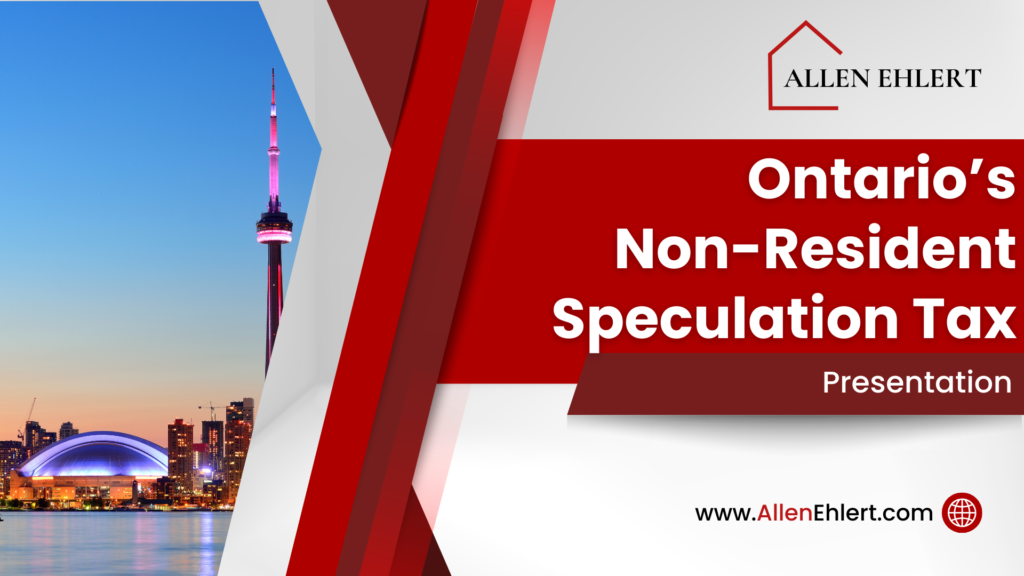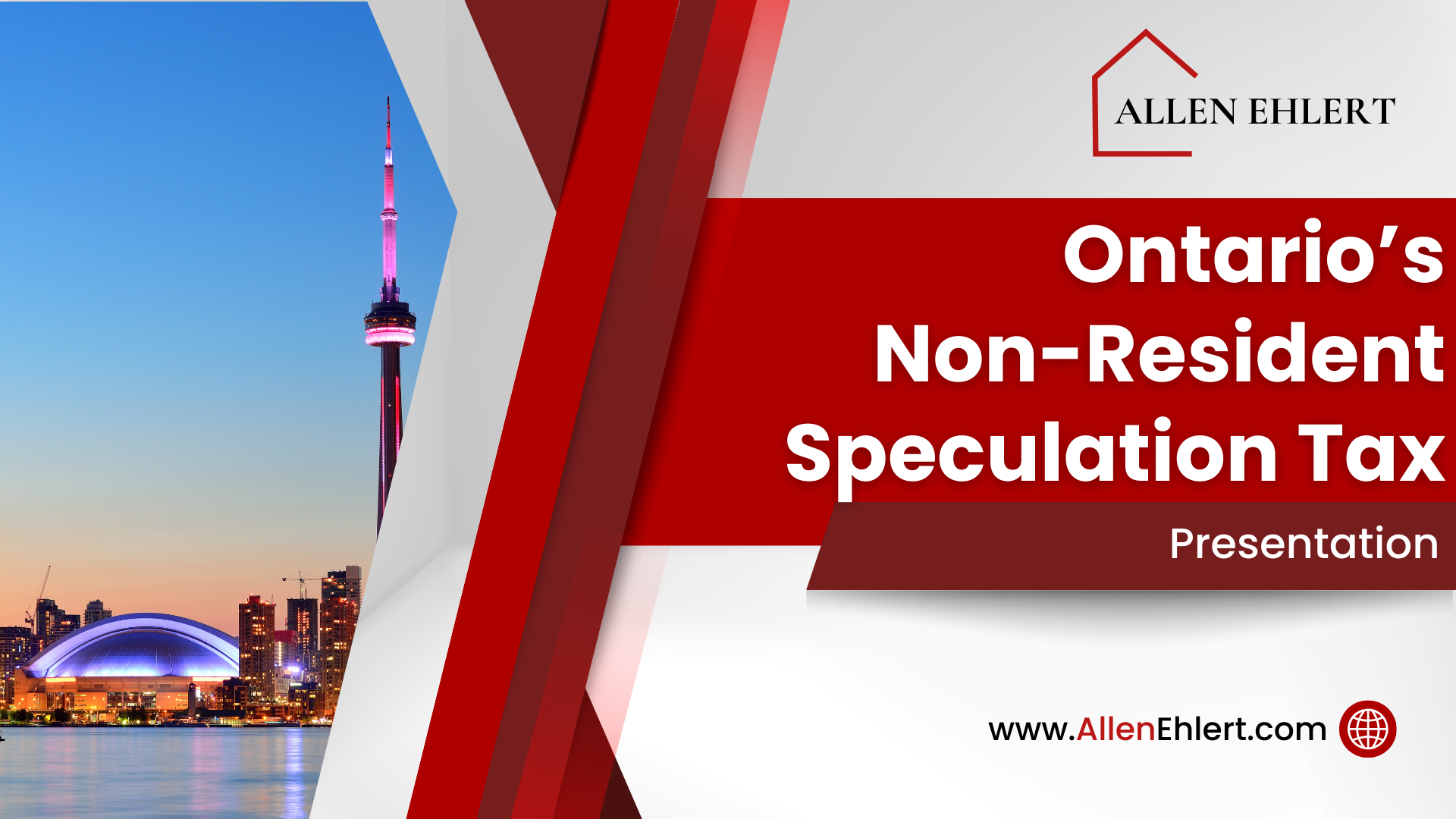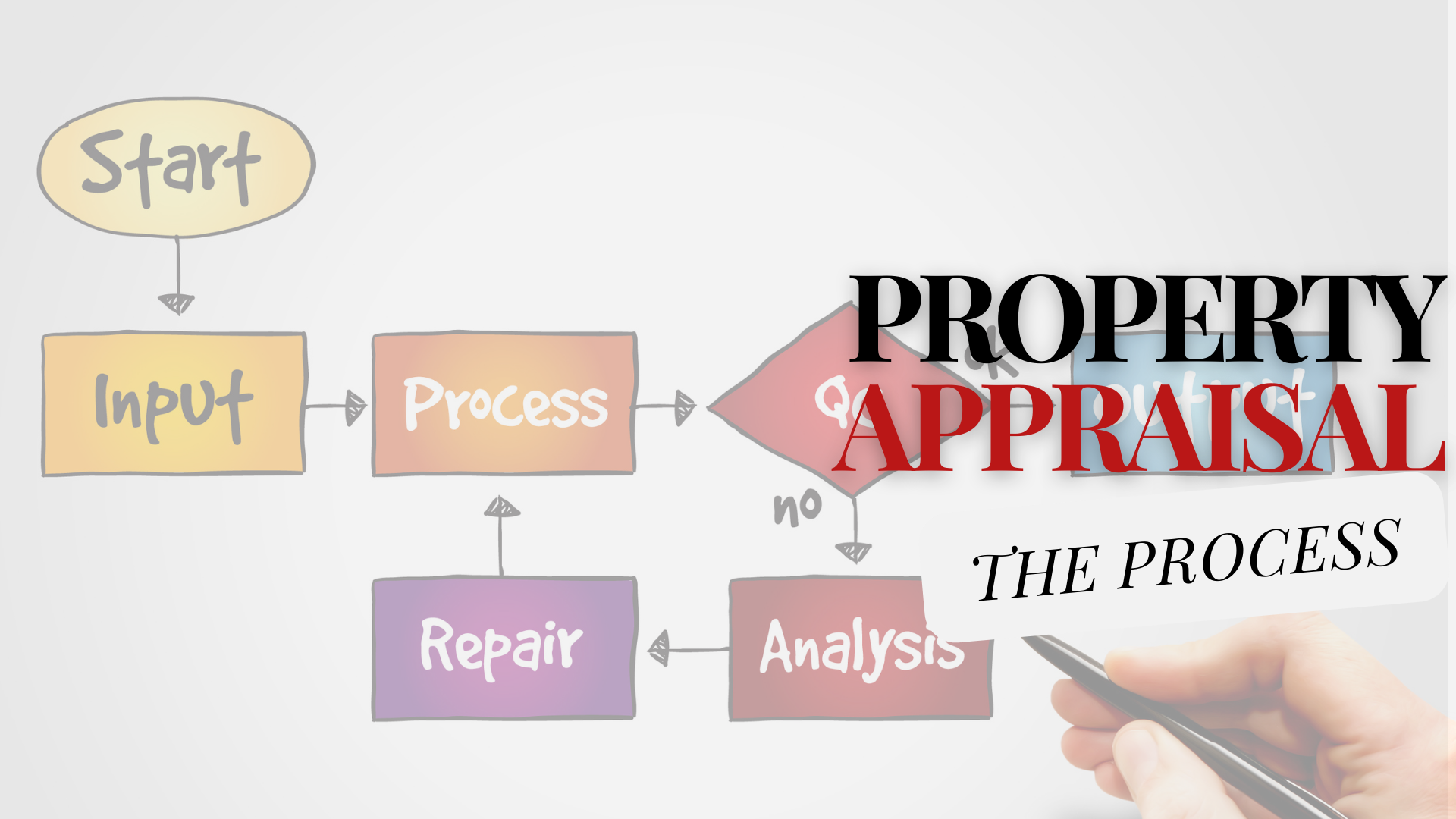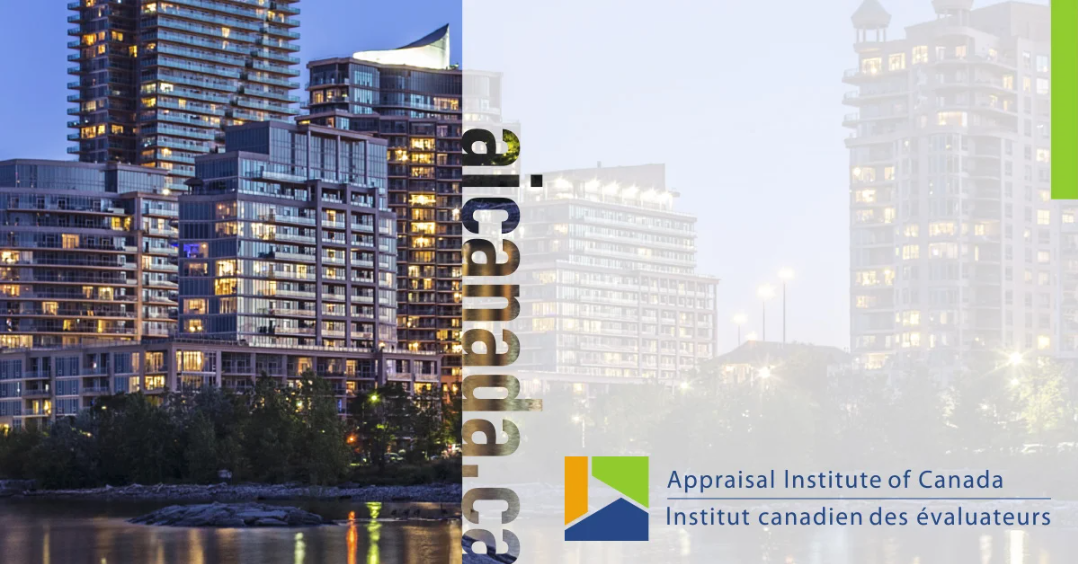What You Need to Know About Ontario’s Non-Resident Speculation Tax
Imagine you’re a young professional who’s recently relocated to Toronto for work. The thriving city and its vibrant neighbourhoods have persuaded you to take the plunge and buy your first home. Just as you’re about to close the deal on a charming townhouse, you find out about the Non-Resident Speculation Tax (NRST). Suddenly, this extra 25% tax complicates your purchase since you’re still navigating the permanent residency process. How will this affect your dream of owning a home in Ontario’s bustling real estate market?
This scenario highlights the crucial role of understanding the Non-Resident Speculation Tax, which was established to address the impact of non-resident investors on Ontario’s housing market. As of October 25, 2022, this tax has been increased to a significant 25%, affecting purchases or acquisitions of interests in residential properties by individuals who are not Canadian citizens or permanent residents, along with foreign corporations and taxable trustees. Recognizing your obligations under the NRST, along with the conditions, exemptions, and potential rebates available, is indispensable for navigating Ontario’s real estate market smoothly.
Key Takeaways
- The Non-Resident Speculation Tax (NRST) was implemented to curb non-resident speculation in Ontario’s real estate market.
- As of October 25, 2022, the NRST rate has increased to 25%.
- This tax affects individuals who are not Canadian citizens or permanent residents, as well as foreign corporations and taxable trustees.
- The NRST is additional to the Ontario Land Transfer Tax (LTT) and is not compounded.
- Understanding the criteria for foreign nationals, foreign corporations, and taxable trustees is essential for compliance.
- Potential buyers and existing property holders should be aware of their obligations, exemptions, and possible rebates under the NRST.
Introduction to the Non-Resident Speculation Tax
The Non-Resident Speculation Tax (NRST) is an integral financial measure implemented by the Ontario government aimed at regulating the province’s real estate market. By imposing an additional tax on non-residents purchasing residential properties, this policy strives to deter speculative investments by those who do not reside in Canada. This non-resident real estate tax is layered on top of the standard Land Transfer Tax (LTT), making it essential for international investors to understand its implications thoroughly.
Crucially, the NRST impacts individuals and entities outside of Canada, categorizing them under a foreign buyer tax regime. This means that anyone who is not a Canadian citizen or permanent resident falls under the purview of this non-citizen real estate tax. The objective is to curb excessive foreign investments contributing to housing market volatility and ensuring more opportunities for local residents to secure homeownership in Ontario.
As an investor from the international community, being cognizant of the non-resident speculation tax is vital. This tax can significantly influence the total cost of your real estate investments in Ontario. Therefore, a comprehensive understanding of NRST policies, including their application and financial impact, will equip you better for making informed decisions when considering property acquisitions in the province.
For those considering such investments, it is recommended to consult with tax professionals or legal advisors who specialize in Canadian real estate to navigate the complexities of this taxation framework effectively. This ensures that you remain compliant with Ontario’s regulations while optimizing your investment strategy.

Who is Subject to the Non-Resident Speculation Tax?
The Non-Resident Speculation Tax (NRST) applies under specific circumstances, impacting various parties involved in Ontario’s real estate market. Understanding these classifications can enable you to comply effectively with the regulations.
Foreign Nationals
Foreign nationals, defined in accordance with the Immigration and Refugee Protection Act (Canada), are subject to the NRST. This includes individuals who are neither Canadian citizens nor permanent residents of Canada at the time of the property acquisition.
Foreign Corporations
A foreign corporation falls within the scope of the NRST if it is not incorporated in Canada or is not sufficiently listed on a Canadian stock exchange. Such entities must be aware that the current NRST rate applies to their property transactions, thus influencing their investment costs.
Taxable Trustees
Taxable trustees, who manage residential properties for non-residents, also come under the NRST regulations. Understanding the definitions and requirements of the nrs tax and non-resident land transfer tax is crucial for their compliance.
| Category | Definition | NRST Applicability |
|---|---|---|
| Foreign Nationals | Individuals not recognized as Canadian citizens or permanent residents | Yes |
| Foreign Corporations | Entities not incorporated in Canada or insufficiently listed on a Canadian stock exchange | Yes |
| Taxable Trustees | Trustees managing property for non-resident beneficiaries | Yes |
Excluded from NRST are Canadian citizens and permanent residents transacting solely within a similar classification. Potential buyers and trustees should be mindful of these specifics to adhere to Ontario’s tax regulations.
Types of Property Subject to NRST
The Non-Resident Speculation Tax (NRST) focuses on specific types of property, particularly those categorized as “designated land.” It is crucial to understand which properties are subject to this tax to ensure compliance and avoid unexpected liabilities.
Designated Land
Designated land under the NRST includes any residential property that contains one to six single-family residences. This definition extends to various property types such as cottages and condominium units. The classification is based not on zoning but on the property’s characteristics and intended usage, ensuring clarity in determining tax obligations.
Residential Properties
The NRST specifically applies to designated land classified as residential properties. This can encompass:
- Single-family homes
- Multi-residential rental apartments
- Condominium units
- Cottages and similar properties
It is essential to accurately assess whether your property falls under this category to determine if the residential property NRST applies.
Excluded Properties
There are several property types explicitly excluded from the NRST, reflecting the primary focus on residential investments by non-residents:
- Agricultural land: Properties primarily used for farming activities are not subjected to NRST.
- Commercial land: Properties used for business operations are excluded.
- Industrial land: Properties utilized for manufacturing, warehousing, and similar industrial activities are also exempt.
Understanding these exclusions helps investors in commercial ventures, agricultural undertakings, and industrial projects clearly delineate their NRST obligations.
It is pivotal for investors in Ontario’s real estate market to discern if their properties align with the NRST’s definition of residential property to accurately navigate their tax responsibilities. Thorough awareness and appropriate classification will ensure compliance and optimal financial planning.
Calculating the NRST
When determining the Non-Resident Speculation Tax (NRST), the calculation primarily hinges on the value of consideration, which refers to the total amount paid for the residential property exchange. This encompasses both monetary transactions and any other forms of benefit exchanged in the property transfer.
In cases where the property is mixed-use, incorporating both residential and non-residential elements, you must employ a self-assessment tax apportionment method. This involves a meticulous evaluation in which you distinguish and apportion the value attributable solely to the residential component, thereby ensuring the NRST is applicable only to that segment.
To facilitate smooth and precise calculations, maintaining comprehensive documentation of the property’s valuation at the transaction time is essential. Careful records support the self-assessment, guaranteeing the NRST’s correct application based on the accurately apportioned residential value.
| Aspect | Description |
|---|---|
| Value of Consideration | Total amount paid or exchanged for the property, including non-monetary forms of consideration. |
| Self-Assessment Tax Apportionment | Method to allocate the residential portion separately in mixed-use properties for accurate NRST application. |
NRST Transitional Provisions
The introduction of amendments in the Non-Resident Speculation Tax (NRST) brings specific transitional provisions into play. These provisions are crucial for transactions that were already in progress or for which agreements had been signed prior to the implementation of the new rules. Understanding these transitional provisions can help you navigate possible lower rates or complete exemptions on your property transactions.
Eligibility for Lower Rates
Eligibility for NRST lower rates under the transitional provisions is determined by the dates when the purchase and sale agreement was signed. If your agreement was finalized before the enactment of new NRST rates, you might qualify for the lower rates. This is especially pertinent for those who had already committed financially and contractually to the property transaction under different tax expectations.
Transaction Dates and Conditions
Specific transaction dates and related conditions are fundamental in determining the applicability of transitional NRST lower rates. For instance, the date the purchase and sale agreement was signed, along with any assignment agreements, are key factors. These dates must align with the stipulated timeframes in the NRST transitional provisions framework to qualify for the beneficial tax rates. Ensuring compliance with these property transaction conditions is imperative for leveraging potential tax relief.
Understanding the nuances of your property’s transaction dates relative to the NRST amendments can significantly impact your tax obligations and potential exemptions.
| Scenario | Applicable NRST Rate | Condition |
|---|---|---|
| Agreement signed before amendment | Lower Rate | If purchase is finalized as per earlier agreement |
| Agreement signed after amendment | New Rate | Purchases adhere to the updated NRST provisions |
Specific Exemptions from NRST
There are specific NRST exemptions available to certain transferees, including nominees, protected persons, and those purchasing property with a spouse who is a Canadian citizen or permanent resident. Understanding these exemptions can significantly impact your tax obligations.
One key criterion for these NRST exemptions is the commitment to use the property as your principal residence. You must certify your intent to occupy the property as your principal residence within a designated timeline. This commitment is not merely a formality, as thorough evidence to substantiate this claim may be requested.
Registered transfers involving these qualifying categories not only need to be meticulously documented but should also align with the specified time constraints linked to the NRST regulations. Ensuring that your registered transfers adhere to these stipulations can simplify the exemption process and avoid potential complications.
Lastly, maintaining detailed records and robust documentation is essential. These documents serve as proof of your eligibility for the exemptions and your intent to establish the property as your principal residence. Failing to provide adequate evidence may result in denial of the exemption, so it’s paramount to organize and preserve all relevant paperwork diligently.
Nominee and Protected Person Exemptions
To offer clarity on specific exemptions under the Non-Resident Speculation Tax, we focus on two key categories: nominees and protected persons. These exemptions enable eligible individuals to claim relief from the NRST, provided they meet necessary conditions, especially the occupancy of the property as a principal residence.
Nominee Exemption
A nominee NRST exemption applies to individuals nominated under the Ontario Immigrant Nominee Program. This exemption aims to encourage skilled workers to settle in Ontario. To qualify, nominees must intend to occupy the purchased property as their principal residence and fulfil all specified criteria.
Protected Person (Refugee) Exemption
Individuals who are granted refugee status can benefit from a protected person NRST exemption. This aims to ease the integration of refugees into the community by alleviating additional tax burdens. Similar to the nominee exemption, protected persons must also demonstrate their intent to use the property as their principal residence to qualify.
Documentation Requirements
Accurate and thorough documentation is crucial when claiming an NRST exemption. Whether applying for a nominee NRST exemption or a protected person NRST exemption, you must provide clear evidence supporting your eligibility. This includes proof of nomination or refugee status and documents that establish your intent to occupy the home as your principal residence. Regulatory authorities may request additional supporting documentation for tax exemption verification, making it essential to maintain detailed records to ease the review process.
Spousal Exemption
The NRST spousal exemption provides a significant relief to foreign nationals who purchase property jointly with a spouse who is a Canadian citizen, permanent resident, nominee, or protected person. According to the Family Law Act, the term “spouse” encompasses those legally married and those who have cohabitated for a designated period, allowing flexibility within the realm of family law.
To take advantage of the NRST spousal exemption, it is crucial that the property is established as the principal residence for spouses. Both parties must certify that they intend to occupy the property as their primary home, which ensures compliance and the application of the exemption. This declaration generally needs to be confirmed on the closing day of the property transaction.
When understanding the intricacies of the NRST spousal exemption, it is beneficial to refer to how the concept intersects with broader family law principles. The exemption can prevent the imposition of NRST, thereby reducing the overall financial burden on qualifying families. This emphasizes the importance of verifying the residency status of both spouses and ensuring prompt declaration of the principal residence.
NRST Rebates and Refunds
Understanding the various rebates and refunds associated with the Non-Resident Speculation Tax (NRST) is crucial for non-residents who have paid this tax upon acquiring residential property in Ontario. Several scenarios qualify for these rebates, contingent on meeting specific criteria.
Permanent Resident NRST Rebate
One of the most significant rebates available is the Permanent Resident NRST Rebate. Non-residents who become permanent residents within four years of purchasing residential property in Ontario may be entitled to a full refund of the NRST paid. Applicants must occupy the property as their principal residence within 60 days of the property’s conveyance registration and continue this occupancy until applying for the rebate.
Transitional International Student NRST Rebate
The NRST also offers a Transitional International Student NRST Rebate. International students enrolled full-time in an approved institution in Ontario for at least two years from the date of purchase can apply for a rebate on the NRST paid. This rebate aims to alleviate the financial burden on international students, ensuring they can focus on their studies.
Conditions for Rebates
Eligibility for NRST rebates hinges on several conditions. Firstly, the property must be occupied as the principal residence within 60 days of conveyance registration. Furthermore, applicants must provide sufficient documentation to support their rebate claims. These conditions are designed to ensure that rebates are granted to those genuinely meeting the criteria, maintaining the integrity of Ontario’s taxation system.
In summary, whether you are looking to apply for a non-resident speculation tax rebate, seeking an NRST refund, or exploring NRST eligible rebates under various scenarios, it is imperative to thoroughly understand the requirements and maintain accurate records. By doing so, you can effectively manage your real estate tax obligations and potentially benefit from real estate tax rebates Ontario offers.
How to Apply for NRST Rebates
Effectively navigating the NRST rebate application process requires a meticulous approach to documentation and adherence to set guidelines. Initially, you must complete and submit the Ontario Land Transfer Tax Refund/Rebate Affidavit. This form is crucial for verifying your eligibility and providing detailed information on the property transaction.
Supporting documents play a significant role in your application. You need to compile comprehensive proof of payment, demonstrating that the NRST was indeed paid at the time of property transfer. Additionally, proof of occupancy that establishes the property as your principal residence is mandatory. Types of acceptable evidence include utility bills, driver’s licence, or other official correspondence with your address.
Another vital component of your NRST rebate application lies in submitting your permanent residence status documentation. This includes copies of your Permanent Resident Card or confirmation of permanent residence (COPR) if you have recently been granted this status.
To streamline the process and minimize the risk of application denial, ensure all documents are accurate and submitted within the allowable timeframe. Applications must be lodged within 180 days of meeting the eligibility criteria. Precise and timely submissions can significantly enhance the likelihood of a successful rebate claim.
| Requirement | Description |
|---|---|
| Ontario Land Transfer Tax Refund/Rebate Affidavit | Completed form detailing the transaction and clarifying rebate eligibility. |
| Proof of Payment | Receipt or other evidence confirming NRST payment. |
| Proof of Occupancy | Documents such as utility bills or driver’s licence showing the property as your principal residence. |
| Permanent Residence Status Documentation | Copies of Permanent Resident Card or COPR for recent permanent residents. |
| Submission Timeline | All applications must be submitted within 180 days after fulfilling eligibility requirements. |
In conclusion, adhering to the guidelines and ensuring all necessary documents are properly assembled are essential steps in your NRST rebate application process. This methodical approach will facilitate a smoother application experience, potentially resulting in a successful rebate claim.
Common Misconceptions about NRST
The Non-Resident Speculation Tax (NRST) comes with its share of misunderstandings that can cause unnecessary complications. Addressing these misconceptions is vital to ensure compliance and accurate tax calculations.
Principal Residence Misunderstandings
A common error involves the concept of principal residence. For NRST purposes, principal residence occupation denotes actual living arrangements, not merely the intention to live there in the future. Misinterpreting this can lead to significant issues as tax relief and exemptions depend heavily on verifiable occupancy.
Foreign National Definitions
Another frequent source of confusion is the classification criteria for foreign nationals and entities. The term extends beyond individuals to include foreign corporations and specific trusts. Accurate foreign entity classification is essential to determine NRST obligations. Failing to correctly identify as a foreign entity can result in unexpected tax liabilities.
Rebates and Refunds Clarifications
Misconceptions about NRST rebates and refunds often revolve around eligibility criteria. Many assume qualifications are more lenient than they are. Comprehensive knowledge of NRST rebate clarifications is crucial to prevent misguided rebate applications and ensure successful tax returns.
Conclusion
Understanding the Non-Resident Speculation Tax (NRST) is pivotal for anyone engaged in Ontario’s real estate market, especially non-residents. The NRST, aimed at mitigating speculative investments, demands careful attention to ensure compliance with non-resident property tax regulations. This comprehensive guide has detailed the essential elements of the NRST, including who is subject to the tax, which types of properties are affected, and the potential for exemptions, rebates, and refunds.
With the NRST impacting property transactions across Ontario, staying informed about evolving regulations is vital. Whether you are a foreign national, foreign corporation, or taxable trustee, recognizing your obligations under the NRST can help navigate the complexities of the tax. Assessing eligibility for various exemptions and understanding the conditions for rebates can save you considerable costs. This article aims to clarify these aspects, helping you manage your real estate investments with confidence.
As Ontario continues to adjust its tax policies to regulate the housing market, it is crucial to keep abreast of these changes. A thorough grasp of the NRST and its implications on your transactions will ensure your investments remain compliant and well-managed. By dispelling common misconceptions and providing clear guidance, this guide supports your efforts in adhering to Ontario’s non-resident property tax requirements, ultimately influencing the NRST Ontario impact on your real estate endeavours.
FAQ
What is the Non-Resident Speculation Tax (NRST)?
The Non-Resident Speculation Tax (NRST) is a tax imposed by the government of Ontario on non-residents who purchase residential properties in the province. It aims to regulate the real estate market by dissuading speculative investment from foreign buyers.
Who is subject to the NRST?
The NRST applies to foreign nationals, foreign corporations not incorporated in Canada or insufficiently listed on a Canadian stock exchange, and taxable trustees. Canadian citizens and permanent residents are not subject to the NRST, even if they purchase property with other citizens or permanent residents.
What properties are subject to NRST?
The NRST applies to residential properties that contain one to six single-family residences, including cottages and condominium units. It does not apply to commercial, agricultural, or industrial properties.
How is the NRST calculated?
The NRST is calculated on the value of the consideration involved in the transfer of residential property. For properties with mixed-use, a self-assessment method is utilized to apportion the value of the residential portion for tax purposes.
Are there any transitional provisions for NRST?
Yes, transitional provisions exist and may apply to transactions that were in progress or agreements signed before tax rate amendments. These could qualify for lower rates or exemptions depending on specific transaction dates and conditions.
What exemptions are available from the NRST?
Exemptions are available for certain individuals such as nominees under the Ontario Immigrant Nominee Program, protected persons (refugees), and those purchasing property with a Canadian citizen or permanent resident spouse, provided they meet all stipulated criteria.
Who is eligible for a rebate on the NRST?
Rebates are available to foreign nationals who become permanent residents within four years of purchase, international students, and foreign nationals working in Ontario. Occupancy of the property as a principal residence within 60 days of conveyance registration is a key condition for rebate eligibility.
How can one apply for an NRST rebate?
To apply for an NRST rebate, you must use the Ontario Land Transfer Tax Refund/Rebate Affidavit and submit necessary documentation like proof of payment, evidence of principal residence occupancy, and documentation of permanent resident status. Applications must be submitted within 180 days of meeting eligibility criteria.
What are common misconceptions about the NRST?
Common misconceptions include misunderstandings about the principal residence requirement, confusion over the definitions of foreign nationals and foreign entities, and errors in assuming eligibility for rebates and refunds. Accurate knowledge is essential for compliance and benefiting from potential rebates.












